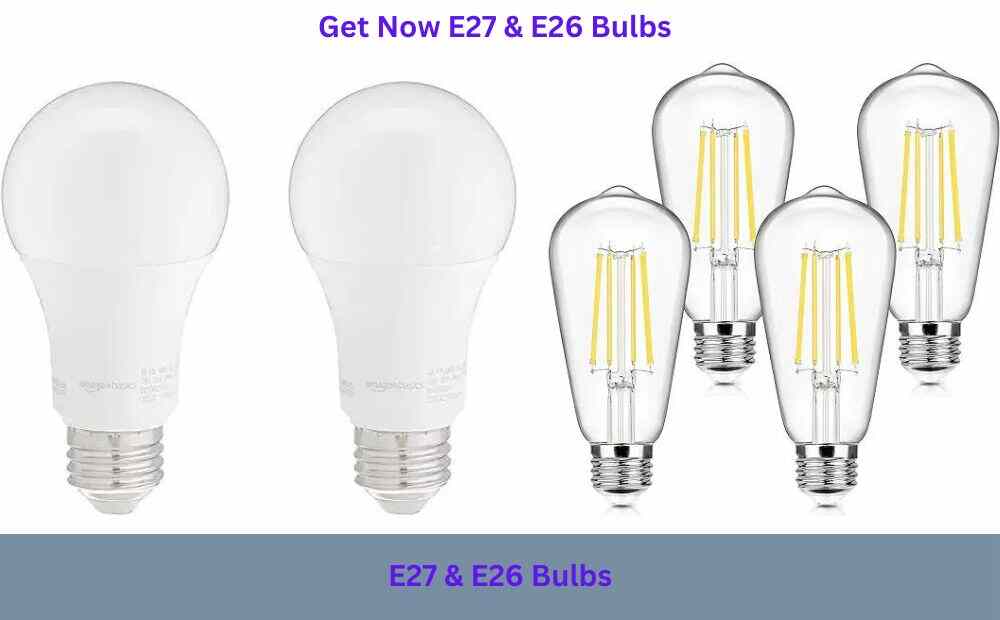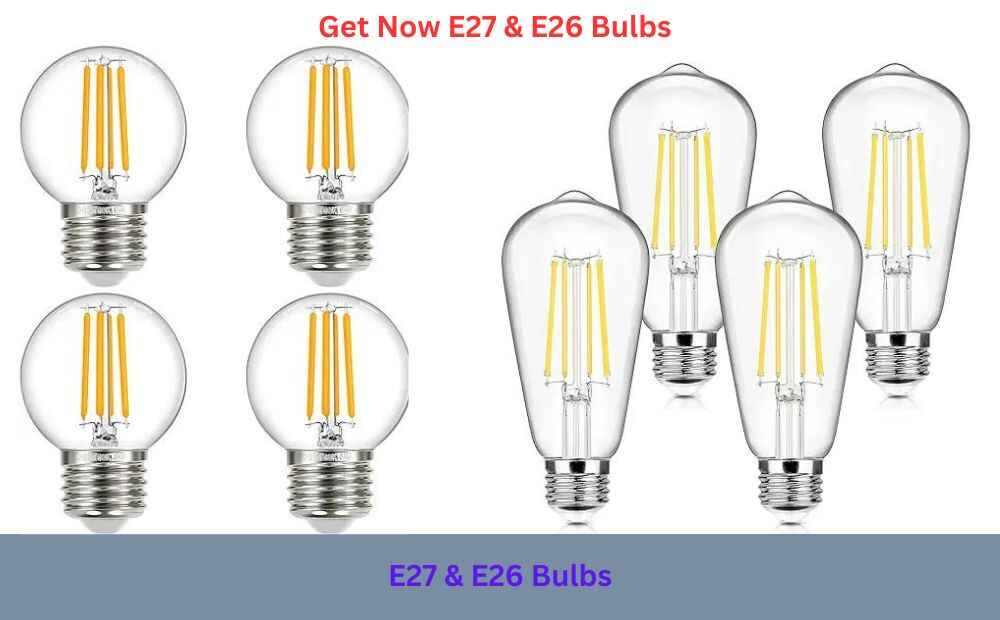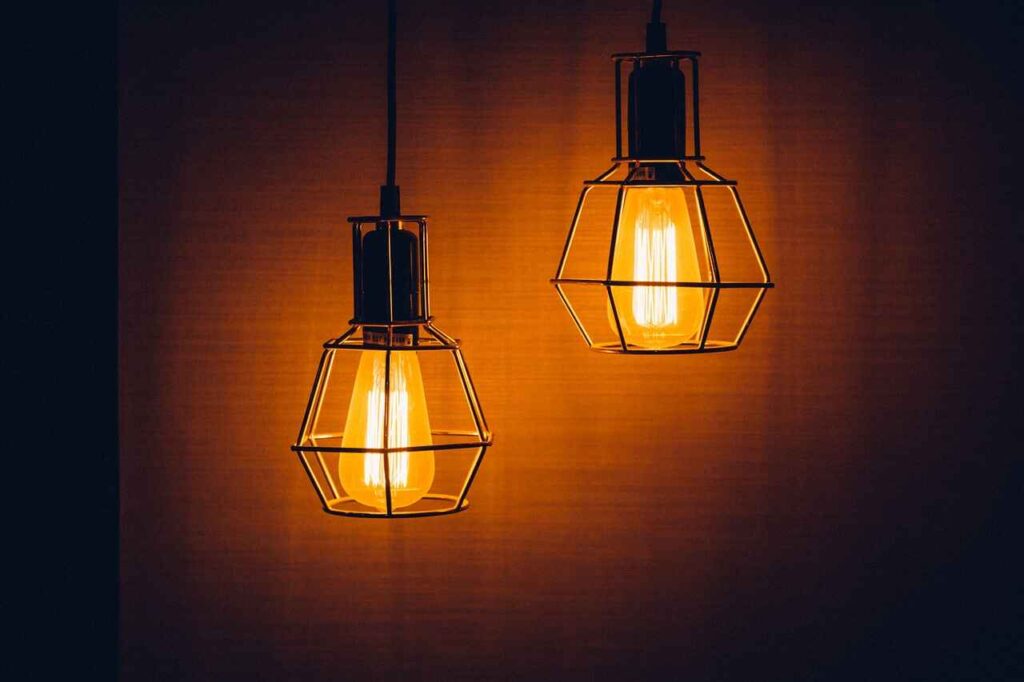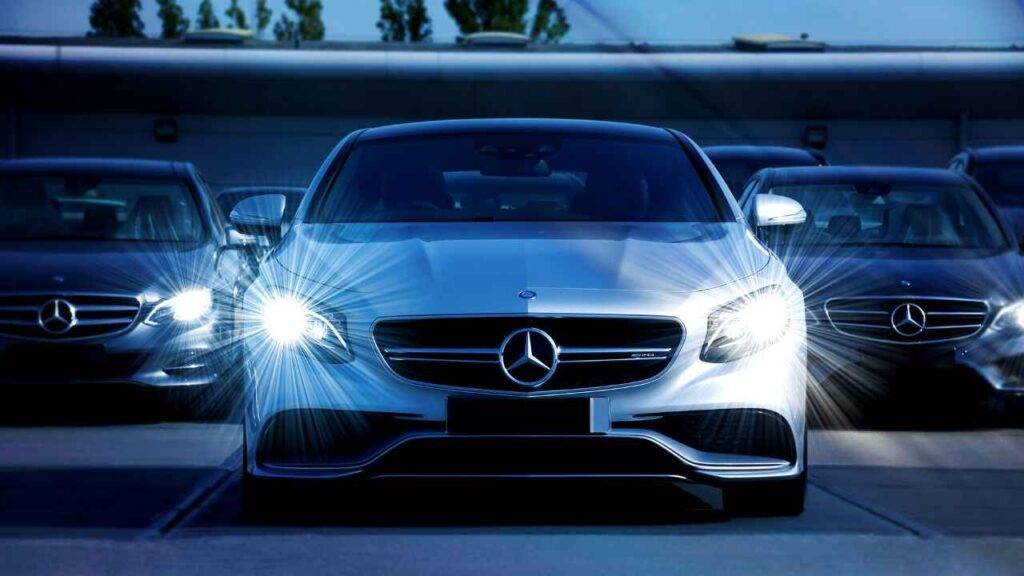Selecting the appropriate light bulb might be difficult. It’s simple to be overwhelmed by the sheer variety of styles and sizes offered. E26 vs E27 bulbs are among the most widely used. Although they have a similar appearance, there are certain variances that are important based on your needs and where you live. In order to assist you choose the right bulb for your lighting needs, this tutorial will explain the differences between e26 and e27 bulbs.

What Are E26 and E27 Bulbs?
The Basics
The bulb base, which screws into the socket, is referred to by the numbers E26 and E27. The initial “E” stands for Edison, a reference to Thomas Edison, the man who created the first usable light bulb. The base’s diameter in millimeters is indicated by the digits 26 and 27. Accordingly, the base of an E26 lightbulb measures 26 mm in diameter, whereas the base of an E27 lightbulb measures 27 mm.
Where Are They Used?
- E26 Bulbs: Commonly used in North America, including the United States and Canada.
- E27 Bulbs: Mostly used in Europe and other parts of the world.
Despite the slight size difference, E26 vs E27 bulbs are often interchangeable. There are, nevertheless, a few exclusions and things to remember.
Differences Between E26 vs E27 Bulbs
Size and Compatibility
- Size: The diameter of E26 bases is 26 mm, whereas that of E27 bases is 27 mm. Though slight, this 1 mm discrepancy may have an impact on compatibility with some fixtures.
- Threading: Although not exact, the bases’ threading is comparable. This implies that although many E26 bulbs and vice versa will fit E27 sockets, this is not always the case.
Voltage Differences
- E26 Bulbs: Designed for North American 120-volt systems, which are the norm.
- E27 Bulbs: Designed for Europe’s standard 220-240 volt systems.Using the right bulb for your voltage system is essential. Incorrect voltage usage might cause lightbulb failure or even harm to your electrical system.
Safety and Certification
- E26 Bulbs: Often come with UL or ETL certifications, which are standard in North America.
- E27 Bulbs: Usually have CE or RoHS certifications, which are standard in Europe.
These certifications ensure the bulbs meet safety and performance standards in their respective regions.
Interchangeability and Compatibility
Can You Use E26 in E27 Sockets?
It is possible to use an E26 bulb in an E27 socket in many situations. The bulb will fit and work as intended despite the often-minor size variation. To make sure compatibility, you should always verify the voltage.
Can You Use E27 in E26 Sockets?
In a similar vein, an E27 bulb can frequently be used in an E26 socket. This is also subject to the same voltage warning. Make sure you are using the appropriate voltage for your fixture by checking again.
Exceptions to Interchangeability
Because of their tight tolerances, some fixtures might not be able to account for the tiny size variation. Moreover, variations in threading can occasionally make a proper fit impossible. If you are doubtful, always test bulbs safely and refer to the manufacturer’s instructions.
Can I Use an E26 Bulb in an E27 Socket?
Yes, in most cases. However, always check the voltage and fixture specifications to ensure compatibility.
Can I Use an E27 Bulb in an E26 Socket?
Yes, but with the same caution regarding voltage and fixture specifications.
What Happens if I Use the Wrong Voltage?
Using the wrong voltage can cause the bulb to fail quickly and may damage your electrical system. Always use bulbs designed for your local voltage standards.
Are LED Bulbs Better Than Incandescent?
Yes, LED bulbs are more energy-efficient, last longer, and are better for the environment. They are generally a better choice than incandescent bulbs.
How Do I Dispose of CFL Bulbs?
Because they contain mercury, CFL bulbs need to be disposed of properly at a recycling site. CFLs are accepted in many local recycling programs.



